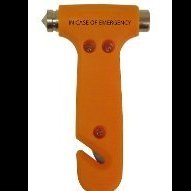Recovery question.
-
Recently Browsing 0 members
- No registered users viewing this page.
-
Topics
-
-
Popular Contributors
-
-
Latest posts...
-
37
Report Thai Woman Seeks Justice After Pet Cat Found Grilled
He only realised it was a cat when he got to the end of a drumstick and discovered a paw. -
49
Advise on buying a BYD car.
Surely wouldn't have anything to do with a company facing bankruptcy I doubt very much other BEV sold this or next year will be have the large depreciations of the past year or so, due to major price war. -
10
USA Trump's Summer Surge: Wins at Home and Abroad Mark a Golden Moment for the President
Damn Tug - You miss commenting on all the things that you just can't come up with anything to make sense but never pass up a chance for a shot at Trump. This makes no sense either. Trump is a real winner. Right now has the highest approval of any President on record for the first 5 months in office. Even better than Reagan. With the big just pass, the American taxpay will not only NOT see their taxes go up $3900 but will save another $3800 or $7700 for the average tax paying family. You Marxist Leftist think government can spend my money better than I can. -
111
Pattaya Brit jailed for 21 years for sex trafficking
Actually - is a Malcy bash at you for your failure to honestly approach the subject. Both British and Thai individuals are involved in this trafficking ring - and all of them are reprehensible. That’s not a controversial statement; it’s a fact. If you want to frame that as a “Thai-bash” that’s your prerogative. But what I’m offering is a straightforward, objective observation: this is a case involving both British and Thai perpetrators. My criticism is aimed solely at those involved in the trafficking and at those who have enabled it through corruption, silence, or wilful blindness. No generalisation of Thais. No generalisation of Brits. Just honest, unflinching commentary directed at those who deserve to be condemned - regardless of nationality - you included. And crucially, no omission of any group due to bias, blindness, or a desire to skew the narrative. If we’re going to confront these crimes seriously, then every perpetrator and enabler must be held to account - without favour, without prejudice, and without selective outrage. -
44
Krungsri Bank - username suspended. Please contact any Krungsri branch near you
All these banks are more and more BS, and then they use the excuse of preventing black money but it just to get even more control over you. Cash is king, that makes up 95% of it with me. That other 5% is for overseas payments. -
76
-
-
Popular in The Pub






.thumb.jpeg.d2d19a66404642fd9ff62d6262fd153e.jpeg)






Recommended Posts
Create an account or sign in to comment
You need to be a member in order to leave a comment
Create an account
Sign up for a new account in our community. It's easy!
Register a new accountSign in
Already have an account? Sign in here.
Sign In Now